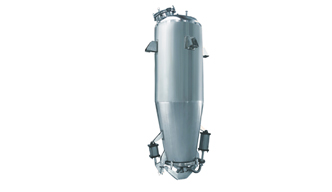Multi - function extraction tanks are essential in pharma, food, and chemical industries. Their prices vary greatly due to multiple factors, which are crucial for enterprises during purchasing.

I. Key Price - Influencing Factors
A. Volume Size
Volume is a key price determinant. Lab - scale extraction tanks, usually a few dozen liters with simple structures, cost from a few thousand to tens of thousands of dollars. For example, a 50 - liter one for experiments might be around \(5000 - \)15000. Industrial large - scale ones, sometimes thousands of liters, like a 2000 - liter tank, need more steel, complex techniques, and strict quality control, priced at \(100000 - \)300000.
B. Material Differences
Materials matter. Stainless steel 304, cost - effective and corrosion - resistant, is common for regular extraction. 316L stainless steel, with added molybdenum, has better corrosion resistance, especially against chloride ions. It's used in high - hygiene and corrosion - resistant fields. Tanks made of 316L are 20% - 50% more expensive than 304 - made ones.
C. Functional Configurations
Function setups vary prices. Basic models with simple heating and stirring are cheap. High - end ones with PLC intelligent control systems, which can monitor and control parameters in real - time, enable remote operation and data recording, and may also have high - efficiency condensers, etc. These advanced features can make the price several times that of basic models.
D. Brands and Manufacturers
Well - known brands and large manufacturers' extraction tanks are pricier. They have a good reputation, invest in R&D, use advanced processes, and offer reliable after - sales. Small brands' products are cheaper but may have quality and service risks. Industry - known brands' tanks can be 10% - 30% more expensive but offer better quality and support.
II. Price Range Summary
The price range of multi - function extraction tanks is wide. Small, common - material, and simply - configured ones cost a few thousand to tens of thousands. Large, high - quality - material, and fully - equipped industrial ones can cost hundreds of thousands or more. Enterprises should consider production needs, budgets, and quality requirements to choose the most cost - effective option for higher production efficiency.
GET A QUOTE